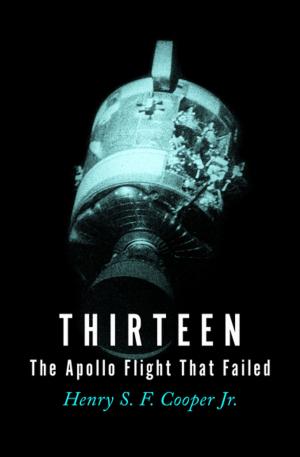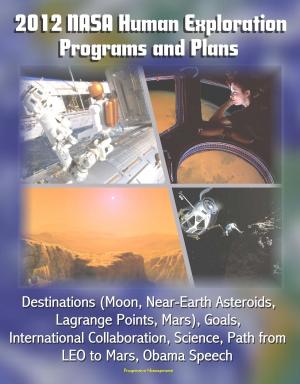A Method of Reaching Extreme Altitudes
The seminal text on rocket science that foretold the Space Age
Nonfiction, Science & Nature, Science, Physics, Mechanics, Technology, Aeronautics & Astronautics, Astrophysics & Space Science| Author: | Robert H. Goddard | ISBN: | 9789188547019 |
| Publisher: | Sibyl Publishing | Publication: | December 1, 1919 |
| Imprint: | Sibyl Publishing | Language: | English |
| Author: | Robert H. Goddard |
| ISBN: | 9789188547019 |
| Publisher: | Sibyl Publishing |
| Publication: | December 1, 1919 |
| Imprint: | Sibyl Publishing |
| Language: | English |
The seminal text on rocket science that foretold the Space Age
“Every vision is a joke until the first man accomplishes it; once realized, it becomes commonplace.” wrote Robert H. Goddard in 1920 after a particularly harsh editorial in The New York Times made fun of his most recent efforts. He had spent the last few years building and launching rockets at the physics lab at Clark University where he taught and did research. By experiment, Goddard knew their efficiency could be greatly improved, and that rockets would work well in a vacuum – something many of his colleagues were not convinced of, and certainly not jeering members of the press.
Already holding several patents on rocket technology, Goddard was urged by the Smithsonian Institution to also publish the theoretical framework underpinning the ideas and experiments carried out. In response, based on a report submitted a few years earlier, he laid out his groundbreaking work in the rather brief “A Method of Reaching Extreme Altitudes”. Although negative reactions such as The Times’ were in the majority when Goddard made national news following the publication, it planted a grand milestone on the just-discovered path that would eventually lead to the Space Age.
The NYT editors must surely have had Goddard’s chapter about raising mass to “infinite” altitude — in other words have it escape Earth’s gravitation — in mind when on the day after the launch of Apollo 11 in 1969 they issued an apology: “Further investigation and experimentation have confirmed the findings of Isaac Newton in the 17th Century and it is now definitely established that a rocket can function in a vacuum as well as in an atmosphere. The Times regrets the error.”
So, forty-nine years after “A Method of Reaching Extreme Altitudes” saw the light of day, doubt had dispersed. Engineers doing rocket work universally acknowledged Goddard to a degree that over time would earn him a legacy as the father of modern rocketry.
The seminal text on rocket science that foretold the Space Age
“Every vision is a joke until the first man accomplishes it; once realized, it becomes commonplace.” wrote Robert H. Goddard in 1920 after a particularly harsh editorial in The New York Times made fun of his most recent efforts. He had spent the last few years building and launching rockets at the physics lab at Clark University where he taught and did research. By experiment, Goddard knew their efficiency could be greatly improved, and that rockets would work well in a vacuum – something many of his colleagues were not convinced of, and certainly not jeering members of the press.
Already holding several patents on rocket technology, Goddard was urged by the Smithsonian Institution to also publish the theoretical framework underpinning the ideas and experiments carried out. In response, based on a report submitted a few years earlier, he laid out his groundbreaking work in the rather brief “A Method of Reaching Extreme Altitudes”. Although negative reactions such as The Times’ were in the majority when Goddard made national news following the publication, it planted a grand milestone on the just-discovered path that would eventually lead to the Space Age.
The NYT editors must surely have had Goddard’s chapter about raising mass to “infinite” altitude — in other words have it escape Earth’s gravitation — in mind when on the day after the launch of Apollo 11 in 1969 they issued an apology: “Further investigation and experimentation have confirmed the findings of Isaac Newton in the 17th Century and it is now definitely established that a rocket can function in a vacuum as well as in an atmosphere. The Times regrets the error.”
So, forty-nine years after “A Method of Reaching Extreme Altitudes” saw the light of day, doubt had dispersed. Engineers doing rocket work universally acknowledged Goddard to a degree that over time would earn him a legacy as the father of modern rocketry.















